
MENUMENU
TALK TO AN EXPERT
Special Hours: 7AM – 6PM PST
TALK TO AN EXPERT
Special Hours: 7AM – 6PM PST
When building a powered kayak or canoe, you probably spent a lot of time figuring out what trolling motor you wanted, but it won’t be very useful without a solid kayak trolling motor battery. You need to know your small engine won’t give out while you’re on the water.
Your kayak trolling motor needs a battery that’s dependable, long-lasting, and safe. There are several kinds of trolling motor batteries, but lithium-ion is the best option to meet the needs of a trolling motor.
We want to help your research before you jump into a battery purchase that leaves you stranded. Read on for our recommendations of the best kayak trolling motor battery for your next adventure.
A kayak trolling motor is a lightweight, self-contained unit that includes an electric motor, a propeller, and steering controls. You affix the motor to the bow or stern of your kayak, connect it to a battery, and you instantly have a powered vessel.
There are hand-controlled and foot-controlled models. Kayak trolling motors typically run on a standard 12V marine battery. These little motors are easy to control, easy to self-install, and you won’t break the bank making the upgrade.
When you’re on the hunt for the best kayak trolling motor battery, you should understand what aspects are the most influential in terms of quality. Let’s check out a few essential components to consider.
Think about how heavy your battery is. When you’re on the water, weight matters. A heavier battery will create more drag on your vessel and make your motor work overtime to keep pace.
Amp-hour (Ah) ratings tell you how long a battery will last when in use. It means that if you have a battery rated for 100 amp-hours, you can expect it to offer 100 amps of power for 1 hour. It doesn’t mean that your battery will only last for 1 hour because it depends on the power draw. For example, if your motor only draws 50 amps, it’ll last for 2 hours.
Keep in mind that your battery will draw more or fewer amps depending on its speed and conditions. If you’re going full-speed upriver, you’ll use significantly more amps than if you’re going low-speed downriver.
For most trolling motor setups, a 100Ah battery will get the job done. However, suppose you’re taking a lengthy trip, your kayak is heavier, or you’ll be traveling long distances upriver. In that case, your motor might draw more amps, necessitating a battery with a higher amp-hour rating.
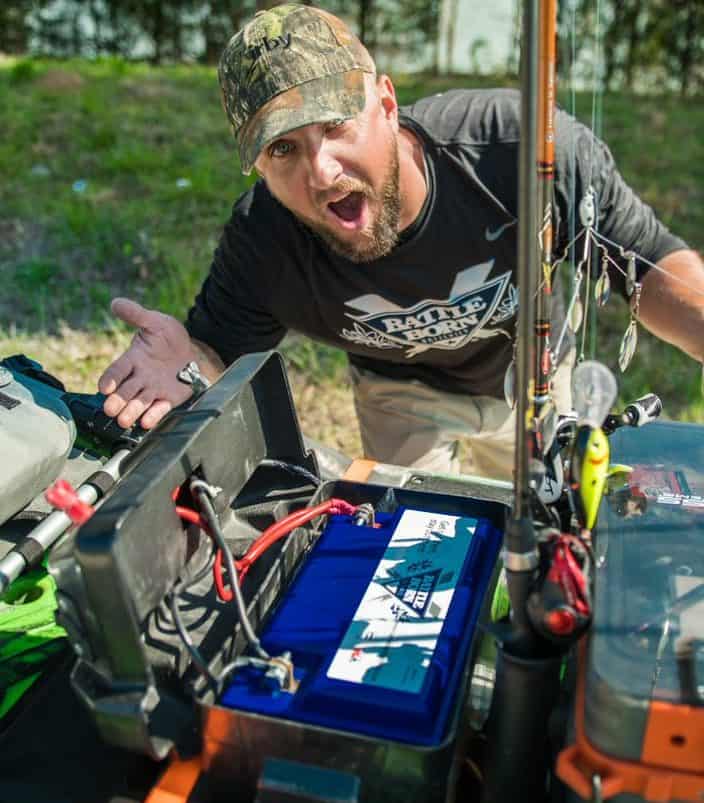
The size and portability are just as important as weight. You need a battery that you can easily move for charging. You’ll also want a portable battery if you want to move the battery between kayaks or put it in storage. If it’s too big, you may have balance problems that cause trouble while on the water.
Battery maintenance makes all the difference for the sake of time and the battery’s lifespan. Maintenance items might include topping off the electrolytes in lead-acid batteries, cleaning off corrosion, preventing rust, and monitoring the charge.
Some batteries require significantly more maintenance than others. Ideally, you want a battery with little to no maintenance required.
Purchasing a kayak trolling motor battery is an investment, and you want to get plenty of time for your money. Consider the average lifespan of a battery before making your final purchase. A battery can last anywhere from one year to 15 years or more, depending on the type you use.
Our Battle Born Batteries are guaranteed 3,000-5,000 full discharge cycles and backed with a 10-year warranty. This generally will last the lifetime of any vehicle it’s used in.
Lithium and lead-acid kayak trolling motor batteries are the most common types of batteries you’ll find while you’re searching for the best deal. Let’s look at some of the pros and cons of each.
Sealed lead-acid batteries are the traditional form of battery power on the market. Most vehicles use a lead-acid starting battery. When your car battery dies, and you have to get a jump, it’s the lead-acid battery you’ll be jumping.
Your car isn’t the only application that uses lead-acid batteries; they’re standard in many types of motors. There are some advantages to using the traditional style battery, but they’re becoming outdated for many applications. Let’s take a closer look.
Lead-acid batteries have also been around for decades and are also an affordable option. You can likely replace a lead-acid trolling battery for less than $200, so even though you’ll be replacing them every couple of years, the low upfront costs can be nice.
It’s important to note that sealed lead-acid batteries don’t have the dangers that non-sealed lead acid batteries present. When the battery has a proper seal, you don’t have to worry about spilling acid and harmful chemicals into the environment.
The bad news about lead-acid batteries is that they’re heavy, comparatively speaking. You can still use a heavy battery to power a trolling motor, but your kayak will ride lower in the water due to the added weight.
More importantly, you can only discharge lead-acid batteries about halfway before you lose power efficiency. Plus, they sustain damage every time you discharge them below 50%. Not only will your battery deplete faster after it’s damaged, but it will also have a shorter lifespan. You can learn more about the differences in lead-acid and lithium right here.
When you charge them, they’re slow to reach capacity. They have several charging cycles, including a float-charge cycle that takes longer and uses more power.
It’s important to note that you can only use a sealed lead-acid battery on a kayak trolling motor, never a non-sealed battery. The instability of the water would cause acid to spill out of the unsealed battery, polluting the environment and potentially causing physical harm.
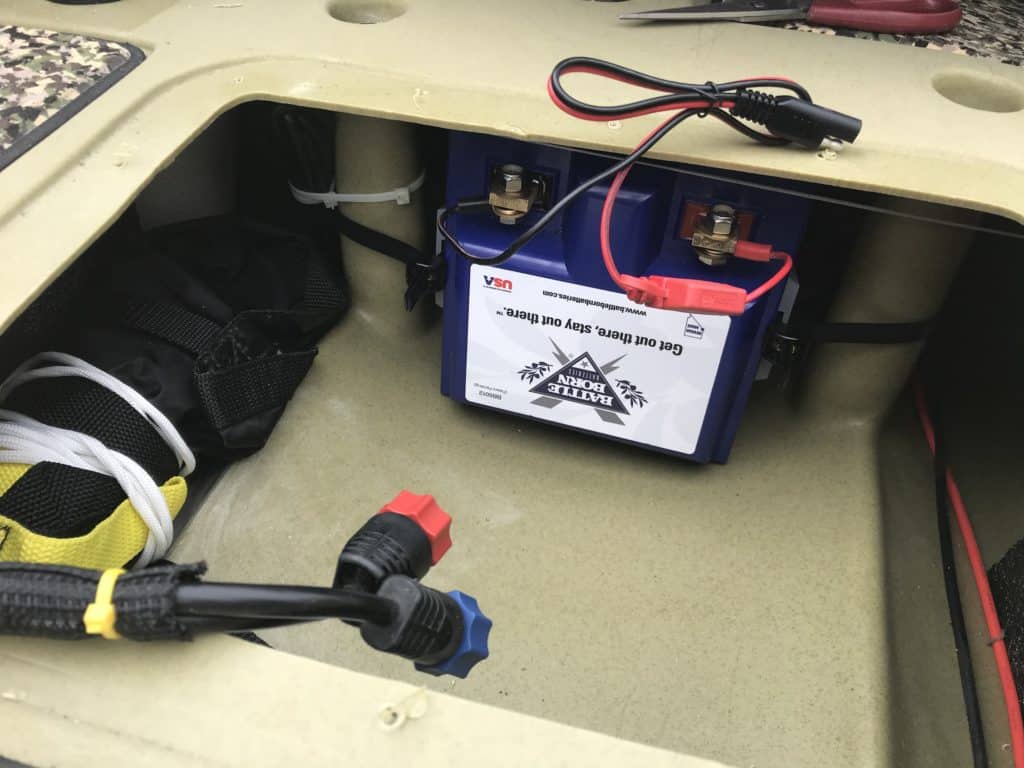
Lithium batteries are the most tech-forward battery type, and they’re replacing lead-acid in many applications. These batteries move in a cycle from a negative electrode to a positive electrode and back to the negative electrode when you charge it. Because of their unique charging cycle, they charge faster and deliver consistent power from full to empty.
The perks of having a lithium-ion battery are excessive.
For starters, Li-ion batteries are lightweight, which is ideal for a kayak. You’ll enjoy a more balanced ride with far less drag. Their light weight also contributes to their efficiency, so their amp-hours tend to last longer than a lead-acid battery.
They also charge faster. You’re looking at a full charge in a few hours rather than waiting all day or night for a full charge. They don’t require a float-charge stage, so they charge at a steadier pace.
Best of all, you can fully discharge them without damaging their lifespan. You don’t have to monitor the battery life closely to keep it from dipping below 50%. Our batteries can discharge 100% of their capacity then automatically shut off, preventing any damage to your battery. It’s still important to keep an eye on battery levels, so you’re not stranded in the water with a dead battery. But at least you won’t have to buy a new battery because you overly discharged it.
You can also expect a steadier amp draw from lithium batteries because the voltage does not sag as much. It’s easier to predict how long your battery will last because the amp draw doesn’t fluctuate as much. And the power of your motor won’t wane when your lithium battery’s charge gets low; the power remains steady from full to empty.
One of the best perks of lithium batteries is that they’ll last for a decade or longer, and they usually come with a 10-year warranty. It’s not uncommon for our lithium batteries to last 15 years or longer with proper care.
Plus, since you won’t have to replace your battery for at least 10 years, you’ll also save money compared to the number of lead-acid batteries you would have had to buy in the same time frame.
The most significant “con” of the lithium-ion battery is that it’s pricey upfront. They typically cost several hundred dollars, whereas the traditional lead-acid option is less than $200.
The cost can be off-putting at first, but after you’ve had your battery for 10+ years, you’ll recognize the time, money, and hassle you’ve saved only buying one battery compared to three or four lead-acid batteries in the same time frame.
When you compare lithium-ion and lead-acid batteries, the answer is clear: Lithium-ion batteries are the best kayak trolling motor battery choice.
They last longer, weigh less, are safer for the environment, and are more efficient than lead-acid batteries. If you want more bang for your buck and a carefree kayak trip, you’ll want to choose a lithium-ion battery for your trolling motor.
We recommend our Battle Born Energy Kayak 100Ah Kit, which has everything you’ll need to power your trolling motor for a decade or more. Alternatively, for short trips out on the water, you can check out our 50Ah Kayak Kit to get you started.
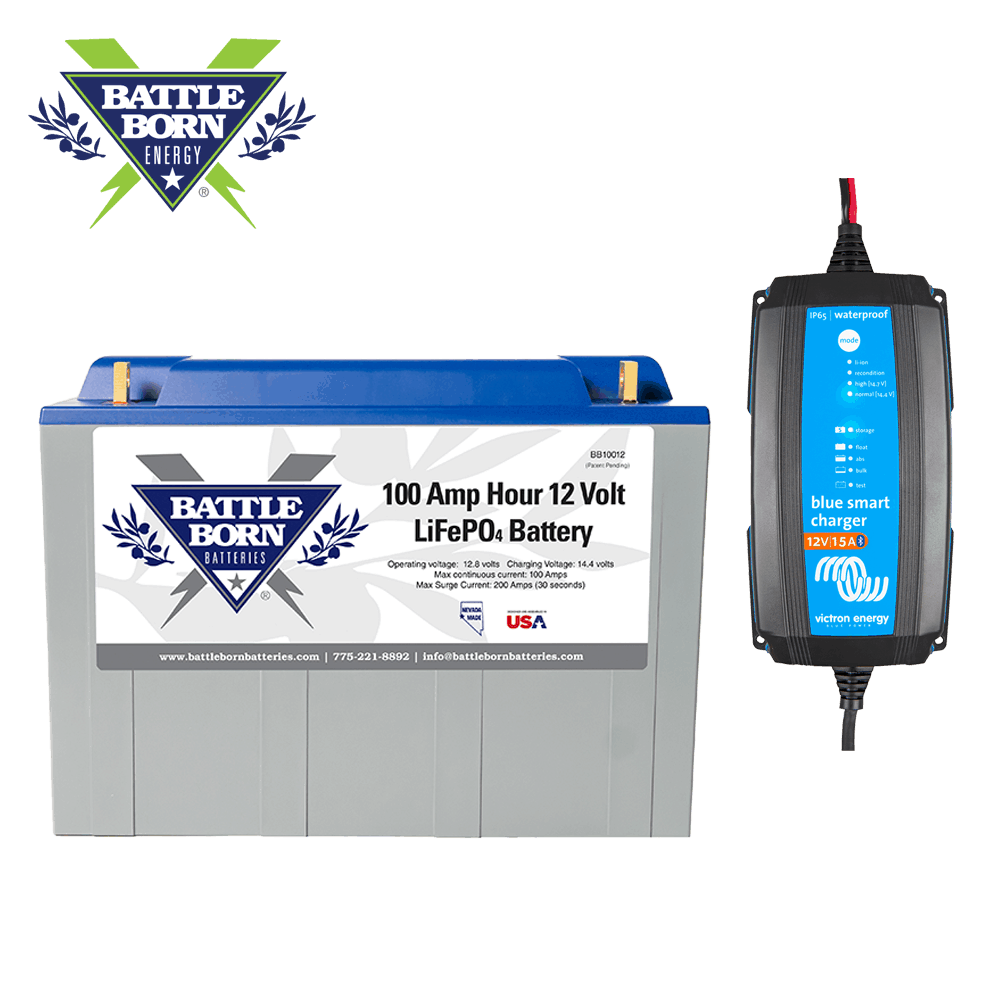
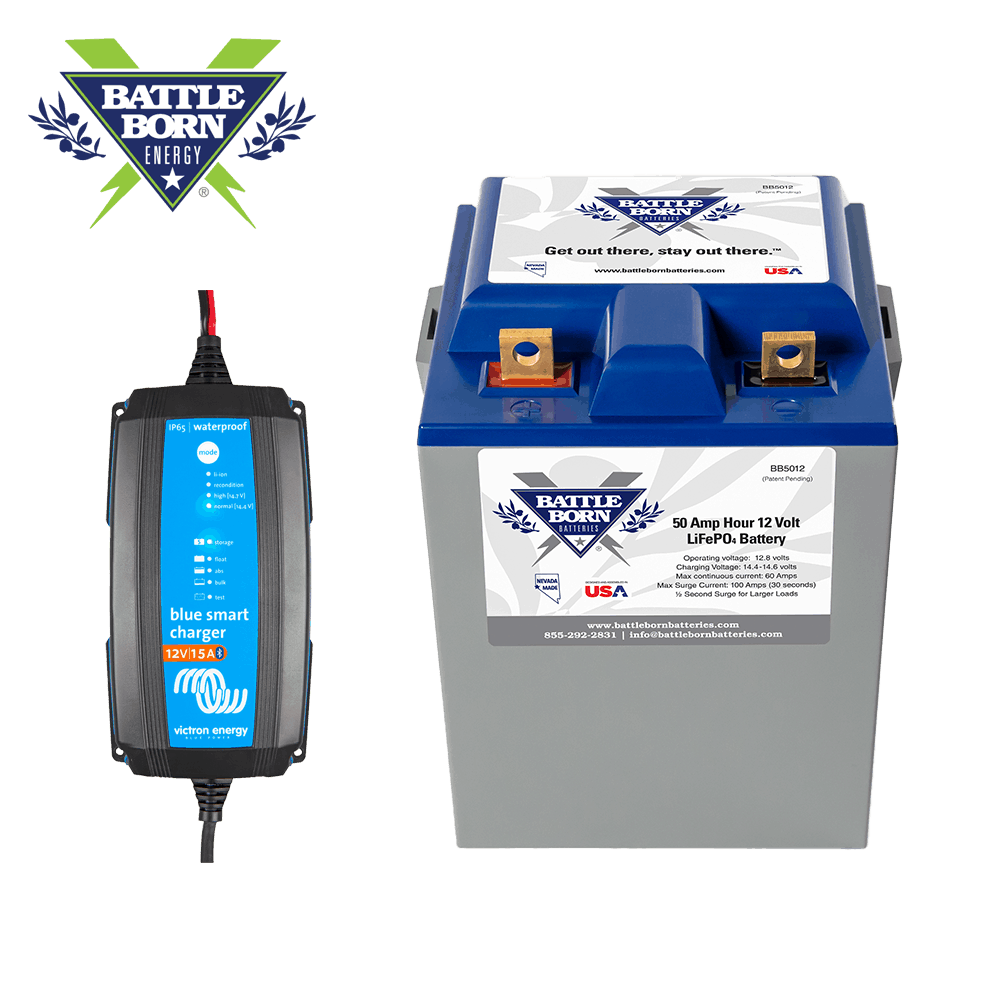
The beauty of a lithium-ion battery is that it will last as long as advertised. If the battery says it’s 100Ah, then you’ll get 100 amps in an hour. Let’s look at a practical example to put this in perspective.
Let’s assume your motor requires 20 amps on low speed and 50 amps on high. If the battery has a 100Ah rating, it will last 5 hours on low and 2 hours on high. Environmental factors like wind and current direction might impact that time slightly, but you’ll still see more efficient, steady power with your lithium battery.
Mounting your kayak trolling motor battery will take a little creativity on your part. You could purchase a standard battery mount and mount it in your cargo area.
You could also fashion a DIY battery box to make your kayak trolling motor battery easier to transport and protect it from the elements. One method is to purchase a basic ammo box that fits the shape of your battery. Cut out a notch in the corner for your wiring harnesses. Enclose the battery in the box, and seal it.
Once you’re ready to set out, set the box inside your cargo compartment. Attach the trolling motor connections, and you’re off to the races!
Based on the evidence presented, spending a little more on a lithium-ion battery is ideal for your kayak trolling motor battery. It’s a set-it-and-forget-it option that will save you time, money, and hassle in the long run. Not to mention, you’ll get more efficient and consistent battery power that’s better for the environment.
We know that building or upgrading an electrical system can be overwhelming, so we’re here to help. Our Reno, Nevada-based sales and customer service team is standing by at (855) 292-2831 to take your questions!
Also, join us on Facebook, Instagram, and YouTube to learn more about how lithium battery systems can power your lifestyle, see how others have built their systems, and gain the confidence to get out there and stay out there.
Shop Best Sellers
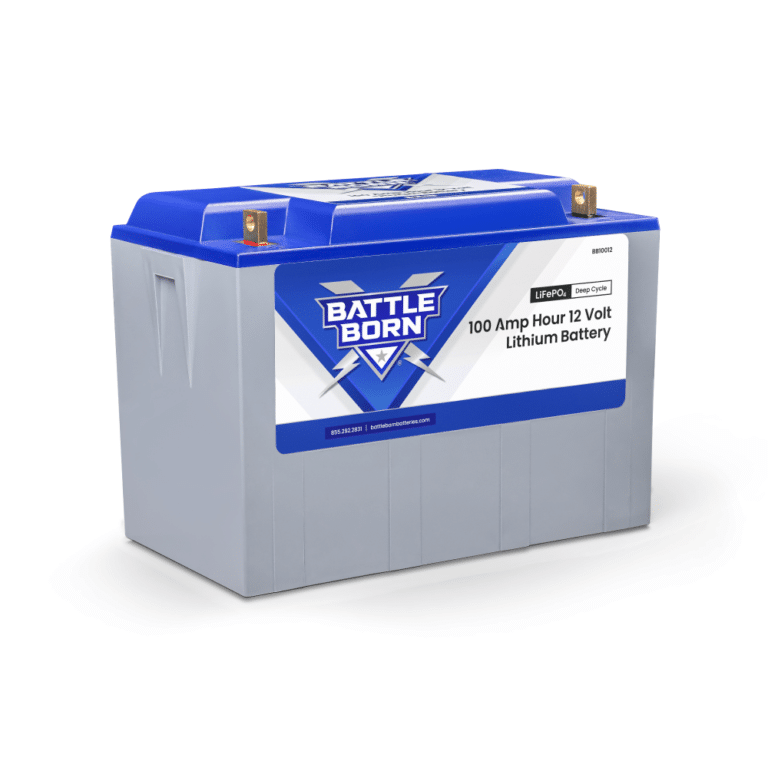
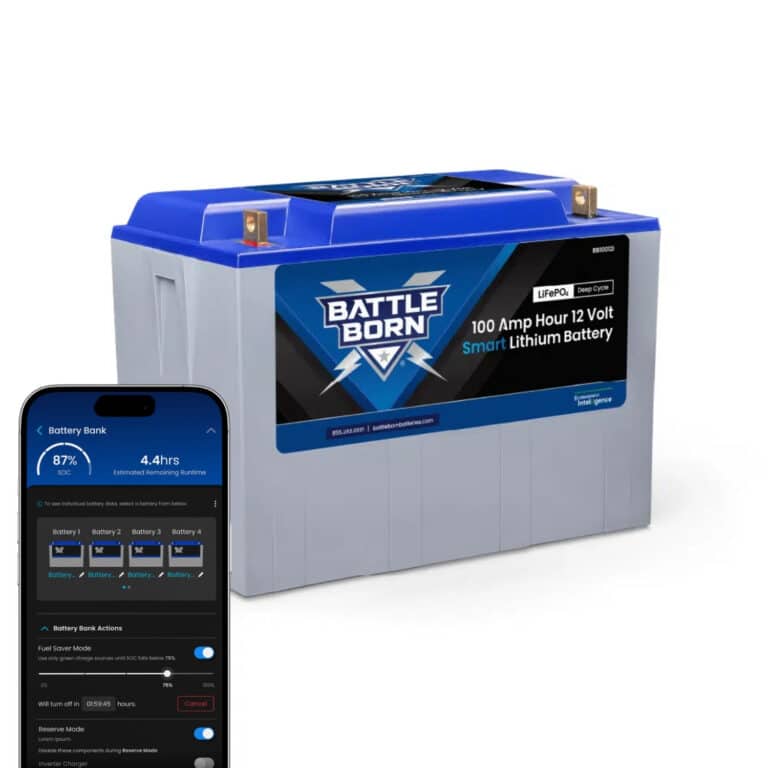
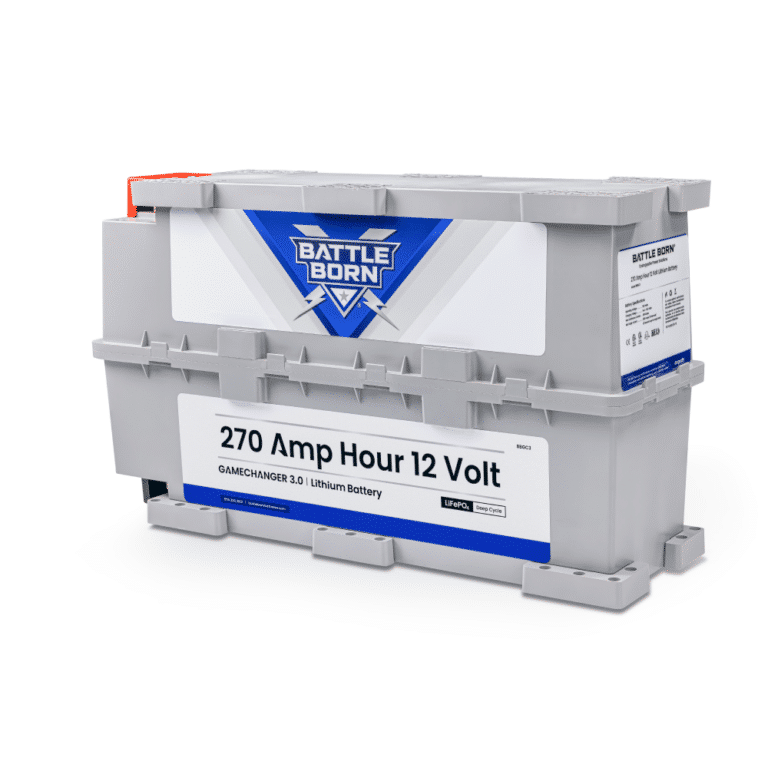
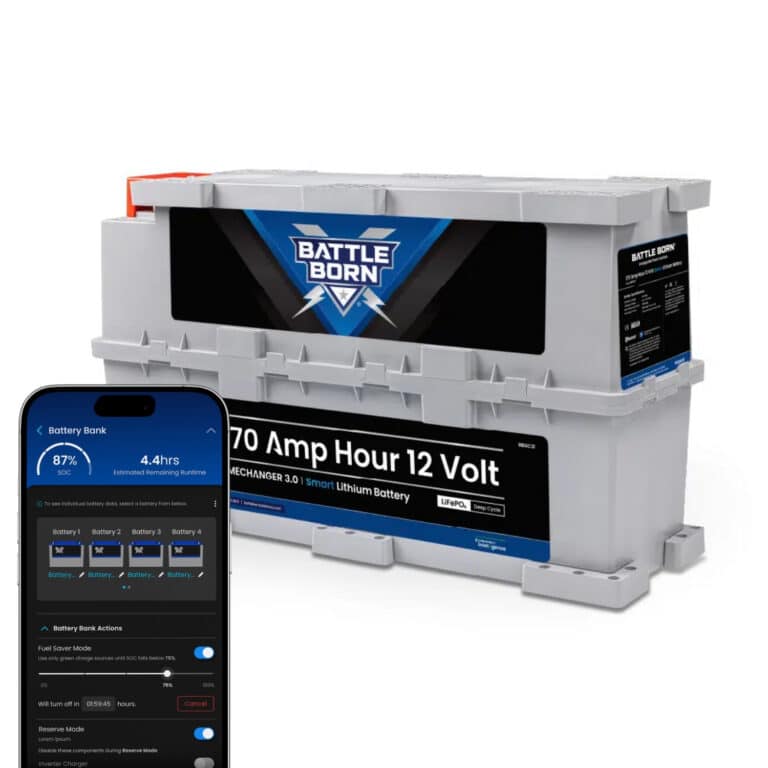
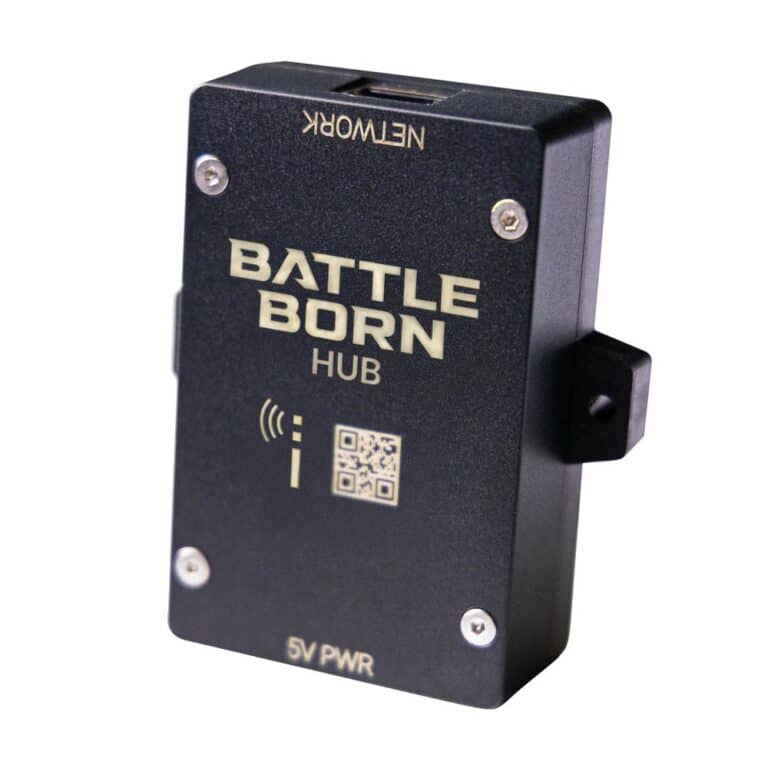
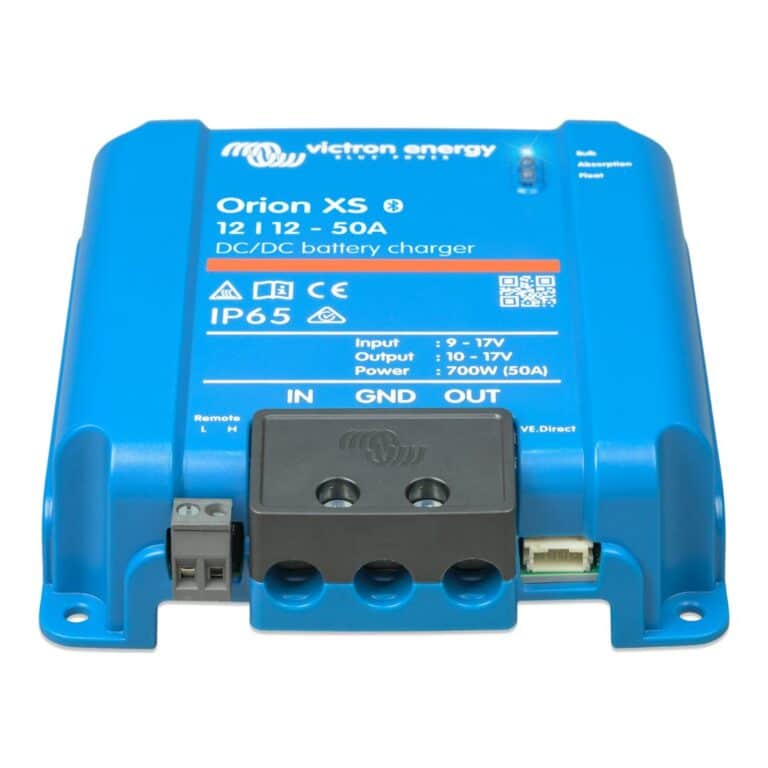
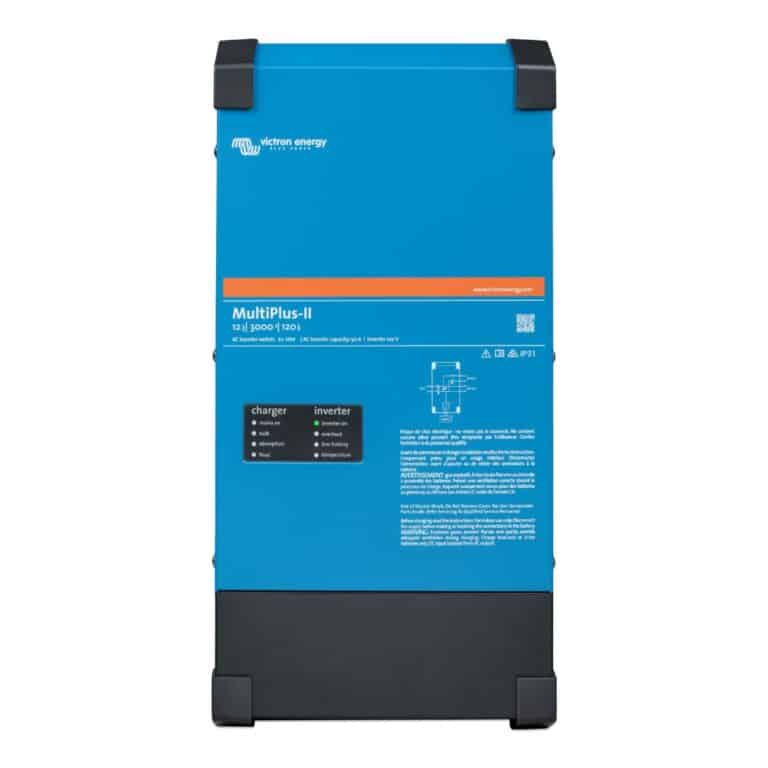

Ask a technical specialist now at 855.292.2831
Stay in the Know